Pesca en puerto rico: Pesca en Puerto Rico, 2023
DRNA |
Preguntas Frecuentes sobre los fondos federales para el desastre pesquero ocasionado por los huracanes Irma y María en Puerto Rico
Esta lista de preguntas frecuentes pretende facilitar el conocimiento de los procesos de asistencia mediante fondos federales por desastres pesqueros que adjudicó la Oficina Nacional de Administración Oceánica y Atmosférica (NOAA) al Gobierno de Puerto Rico bajo la administración del Departamento de Recursos Naturales y…
11 April, 2022
/
Orden Administrativa Núm. 2021-03 Para Emitir una Autorización Provisional de Pesca Mientras se Evalúan las Solicitudes de Licencias
ORDEN ADM 2021-03 EMITIR AUTORIZACION PROVISIONAL DE PESCA…
13 April, 2021
/
Impactos de los huracanes Irma y María en los recursos silvestres de Puerto Rico
[e2pdf-view pdf=”. /wp-content/uploads/2019/09/Impacts-of-Hurricanes-Maria-and-Irma-on-Fish-and-Wildlife-Resources-of-Puerto-Rico.pdf”]…
/wp-content/uploads/2019/09/Impacts-of-Hurricanes-Maria-and-Irma-on-Fish-and-Wildlife-Resources-of-Puerto-Rico.pdf”]…
25 September, 2019
/
Órden Administrativa número 2014-01 Para Decretar Veda de Pesca y de Recolección de Organismos En la Reserva Marina Arrecife de Isla Verde
Se decreta Veda de Pesca y Recolección de Organismos en la Reserva Natural Arrecife de Isla Verde…
15 October, 2015
/
Representante César Hernández y Secretaria del DRNA anuncian radicación de nueva Ley de Pesca para Puerto Rico
…
30 September, 2015
/
Oficina de Licencias y Permisos Forestales, Vida Silvestre y Pesquerías
La Oficina de Licencias y Permisos Forestales, Vida Silvestre y Pesquerías pertenece al Negociado de Servicios Especializados de la Secretaría Auxiliar de Permisos, Endosos y Servicios Especializados. …
…
16 July, 2015
/
Programa de Estadísticas Pesqueras
El Programa de Estadísticas Pesqueras tiene implementado desde 1967 un sistema de recopilación de producción pesquera de la Isla y de la forma de mercadeo del pescado y marisco….
06 July, 2015
/
Información básica sobre el pez león en Puerto Rico
Información general sobre el pez león en Puerto Rico…
15 May, 2015
/
División de Coordinación de Proyectos de Pesca y Vida Silvestre
Esta división tiene a su cargo monitorear las actividades de restauración de la pesca recreativa y de la vida silvestre que se desarrollan bajo los proyectos subvencionados con fondos federales del Servicio de Pesca y Vida Silvestre….
14 May, 2015
/
CP-02: Formulario de declaración jurada para pescador comercial
Este formulario requiere información del peticionario, incluyendo los ingresos obtenidos durante la vigencia de la licencia de pesca comercial. …
…
25 April, 2015
/
CP-05: Solicitud de inscripción de armas de caza
Este documento requiere información personal del solicitante, datos sobre las armas de caza a inscribir y los requisitos. …
25 April, 2015
/
CP-09: Solicitud de licencia de pesca comercial
Este documento requiere información personal del solicitante e indica los requisitos para obtener la licencia de pescador comercial. …
25 April, 2015
/
Peces y pesca en el Archipiélago | Puerto Rico
Se podría considerar que la pesca en Puerto Rico empezó formalmente en el año 1936, en medio de la Gran Depresión, con la promulgación de la Ley de Pesca Núm. 83. Esta Ley se enfocó en estimular y ordenar la pesca comercial, otorgando licencias de pesca a todo solicitante, sin más criterios. La Ley Núm. 83 no contemplaba la pesca recreativa, ni la acuicultura.
Por los años 1980, Puerto Rico contaba con una próspera industria pesquera de empaque de atún importado del Pacífico, que era una de las mayores empresas de alimentos procesados en la Isla, tanto en volumen como por valor. En contraste, en esta época, la pesca comercial local había pasado su pico productivo y la recreativa empezaba a despertar. Hubo iniciativas de adiestrar pescadores locales en las técnicas de pesca de atún en los embarcaciones grandes, pero no dieron los resultados esperados. Los tiempos cambiaron, las plantas procesadoras de atún cerraron y esta gran industria dejó de aportar miles de empleos y millones de dólares a la economía de Puerto Rico.
En el 1998, se firmó la Ley de Pesquerías de Puerto Rico (Ley Núm. 278), en un adelanto significativo para la base legal de la pesca en la Isla. Mediante esta Ley y el Reglamento de Pesca del 2004 por primera vez se definieron las varias categorías de “pescador comercial”, “pesca recreativa” y “acuicultura”, además de establecer algunas medidas para el manejo y conservación de las poblaciones pesqueras. En el 2010, se actualizó el Reglamento de Pesca, añadiendo y refinando medidas de manejo.
En el 2010, se actualizó el Reglamento de Pesca, añadiendo y refinando medidas de manejo.
En el año 2000 inició en el DRNA el programa de estadísticas de la pesca recreativa marina, como complemento al programa de estadísticas pesqueras que recopila datos de la pesca comercial desde hace décadas. Estos dos programas nos presentan el cuadro más completo de la actividad pesquera en el Archipiélago de Puerto Rico. La inclusión de las islas de Culebra y Vieques en la captación de datos de la pesca recreativa marina ha sido difícil por razones logísticas y sigue como tarea inconclusa.
Históricamente, en la pesca comercial, se capturan aproximadamente entre 170 a180 especies de peces y mariscos. La composición de la captura y las especies principales han variado a través del tiempo, pero en general los carruchos y langostas, peces de arrecife y chillos de aguas profundas constituyen las especies principales hoy en día. La captura se desembarca en alrededor de 89 centros pesqueros en la costa. Se estima que hay aproximadamente 1,200 pescadores y pescadoras comerciales, número que tiende a mantenerse bastante estable a través de los años. En el oeste es más intensa la pesca, por la amplia plataforma insular. La actividad pesquera en las islas municipio de Vieques y Culebra es parte importante de su cultura y economía. No hay un estimado del valor económico total de la pesca comercial en Puerto Rico, pero genera unos $6 a 7,000,000 anuales en ventas directas, basado en capturas de 1,500,000 a 2,000,000 lbs.
Se estima que hay aproximadamente 1,200 pescadores y pescadoras comerciales, número que tiende a mantenerse bastante estable a través de los años. En el oeste es más intensa la pesca, por la amplia plataforma insular. La actividad pesquera en las islas municipio de Vieques y Culebra es parte importante de su cultura y economía. No hay un estimado del valor económico total de la pesca comercial en Puerto Rico, pero genera unos $6 a 7,000,000 anuales en ventas directas, basado en capturas de 1,500,000 a 2,000,000 lbs.
La pesca recreativa en el archipiélago de Puerto Rico presenta un cuadro bastante diverso, con actividad en agua dulce, estuarios y el mar. En la Isla, hay unos 20 embalses, en la mayoría de los cuales se practica la pesca recreativa de lobinas, tucunares, chopas, tilapias y barbudos, entre otros. El DRNA ha desarrollado facilidades modernas en los embalses de Guajataca, Lucchetti, La Plata y Cerrillos, para atender tanto a los aficionados como a los que organizan torneos competitivos entre clubes.
La pesca recreativa en los ríos tiende a concentrarse en las desembocaduras, con los robalos, mojarras y cocolías entre las presas comunes. En algunos ríos, la pesca del cetí (etapa larval del olivo) que se captura con redes de malla fina, es una tradición. En los últimos años, ha crecido mucho la pesca con mosca (“Fly fishing”) y la “trucha tropical”, el dajao, se considera un reto en la parte alta de los ríos.
La pesca con botes de motor, kayaks y de orilla en las lagunas costeras es cada día más popular. Sábalos de hasta más de 100 lbs., robalos, jureles, mojarras, picuas y más deleitan a los aficionados a la pesca recreativa en lagunas. Las lagunas de San José y Torrecillas se promueven a nivel internacional por la calidad de la pesca de los sábalos grandes que se encuentran todo el año, a solo minutos del aeropuerto internacional. A su alrededor, se han levantado prósperos negocios de “chárter” para atender visitantes, y hasta un pequeño hotel en la orilla de la Laguna Torrecillas, especializado en ofrecer servicios a las personas aficionadas a la pesca recreativa de sábalos.
Puerto Rico goza de fama internacional por la pesca del marlín azul, sobre todo en la costa norte. Se celebran numerosos torneos cada año. Pero la especie de mayor captura en la pesca recreativa marina es el dorado. Las personas pescadoras en botes privados abordan cerca de 1 millón de libras de dorado cada año, además de petos, atunes, sierras y otros. Otra modalidad popular de pesca recreativa marina en Puerto Rico, que incluye las islas municipio, es la pesca de arpón en apnea. La Isla cuenta con personas campeonas reconocidas a nivel mundial en esta especialidad.
En Vieques y Culebra, la pesca recreativa marina es uno de sus grandes atractivos turísticos, con mucho potencial de crecimiento si es bien planificado y manejado. Las dos islas cuentan con las últimas poblaciones saludables de macaco (“bonefish”) en Puerto Rico. Hay negocios de “chárter” dedicados a esta especie. Es la más valiosa entre todas las especies de peces recreativos, con la posible excepción del marlín azul. En los cayos de la Florida, se estima el valor de cada ejemplar, a través de su vida, en unos $70,000 cuando se practica la “captura y liberación”.
En los cayos de la Florida, se estima el valor de cada ejemplar, a través de su vida, en unos $70,000 cuando se practica la “captura y liberación”.
En el 2011, se estimó que la participación en la pesca recreativa marina en Puerto Rico fue de aproximadamente 100,000 personas. Aportaron más de $72,000,000 a la economía local. Encima de esto, se estima que algunas 60,000 a 80,000 personas pescan recreativamente en aguas interiores, pero al momento no contamos con datos de su aportación a la economía local.
De lo anterior, se ve claramente que Puerto Rico – el Archipiélago completo – pesca. Y esa pesca contribuye significativamente a la economía, lo cual subraya la importancia de su manejo cuidadoso y conservación.
“Hot sand” in Vieques: a meeting place for friends
The 7th International Caribbean Music Festival took place in Puerto Rico.
From February 6 to 13, the VII International Caribbean Music Festival “Hot Sand” took place on the island of Vieques in Puerto Rico.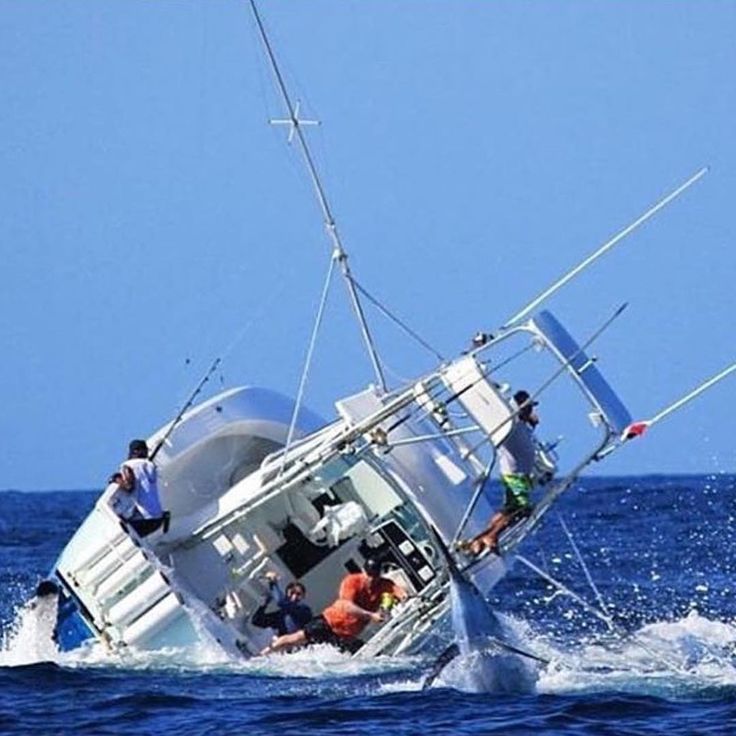 It has become a good tradition for musicians and lovers of bard songs to gather in the middle of winter in a paradise corner of the Caribbean Sea and enjoy the beautiful weather in the company of musicians and creative people. The organizer of this popular festival is Petr Tyutyunik, the organizer of the KSP “Wanderers” and the tourist project “With a song for …”.
It has become a good tradition for musicians and lovers of bard songs to gather in the middle of winter in a paradise corner of the Caribbean Sea and enjoy the beautiful weather in the company of musicians and creative people. The organizer of this popular festival is Petr Tyutyunik, the organizer of the KSP “Wanderers” and the tourist project “With a song for …”.
For seven years, the Hot Sand festival has developed its own traditions. Its goal is to promote the author’s song and to get acquainted with the work of talented musicians from all over the world. Musicians performing art songs and music from Russia, the Czech Republic, Poland, Estonia, Ukraine, Belarus, Canada and almost all US states, from Alaska to Florida, have already “noted” here. Many musicians and guests of the festival come several times in a row. This year, due to the pandemic, the musician Alexei Kudryavtsev from the Czech Republic, so expected by his fans, could not come. In the new format of today’s realities, his concert was organized remotely.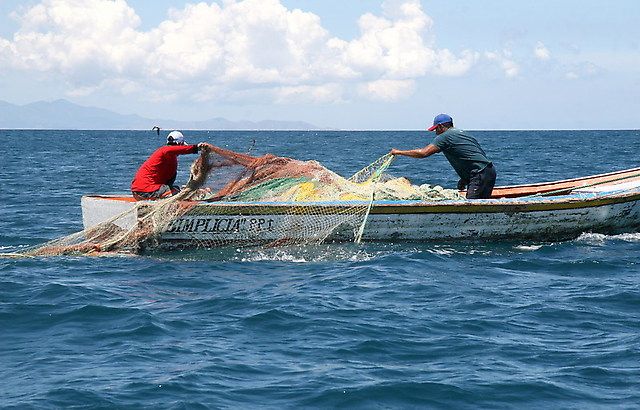 All participants of the festival listened to his songs together with the guitar and communicated with him online! So the planned concert eventually took place.
All participants of the festival listened to his songs together with the guitar and communicated with him online! So the planned concert eventually took place.
Hot Sand 2021 was full of interesting events, concerts, trips around the island, swimming in warm and picturesque lagoons.
Every morning started with a workout at the nearest beach. It was conducted by Irina Leonova, a healthy lifestyle trainer and Larisa Petrenko, a naturopath, followed by an indispensable morning bath. At 8.30 a fresh hot breakfast was waiting for everyone, lovingly prepared by Lyusya and Sergey, local residents who live in the villa. After breakfast, everyone went to the beach on the Caribbean side: the island is washed by the warm Atlantic Ocean from the north side, and the warm and calm Caribbean Sea from the south.
At two o’clock in the afternoon everyone was served a hot lunch, served to each on an individual tray and in disposable dishes – a sign of today! After lunch – rest, excursions, preparation for evening performances, team competitions. By tradition, all participants were divided into two teams, each team was headed by its own guru. This year the teams were led by two wonderful singers, the author’s duet Tatiana Zadorskaya and Ekaterina Nekhaeva (Tanya Za and Katya Ne). This duet has repeatedly performed at the KSP “Wanderers” and at the International Children’s Festival in Washington. They also tour the USA a lot, perform their songs together, write poetry, publish children’s books in Russian. For the duration of the festival, they became rivals, and each led their team to victory. Tatyana Za was the guru of the Heroes of Our Vieques team, and Katya Ne led the team of Karantinos Island. Every evening both teams took part in team competitions, improvisations, songs, performances. By tradition, the topic of the last battle was “Vieques is always with you”, and here both teams were at their best – friendship won!
By tradition, all participants were divided into two teams, each team was headed by its own guru. This year the teams were led by two wonderful singers, the author’s duet Tatiana Zadorskaya and Ekaterina Nekhaeva (Tanya Za and Katya Ne). This duet has repeatedly performed at the KSP “Wanderers” and at the International Children’s Festival in Washington. They also tour the USA a lot, perform their songs together, write poetry, publish children’s books in Russian. For the duration of the festival, they became rivals, and each led their team to victory. Tatyana Za was the guru of the Heroes of Our Vieques team, and Katya Ne led the team of Karantinos Island. Every evening both teams took part in team competitions, improvisations, songs, performances. By tradition, the topic of the last battle was “Vieques is always with you”, and here both teams were at their best – friendship won!
This year, the traditional concert in the fortress for vacationers did not take place due to the pandemic, instead, as part of the festival, guitarist Sergei Krichenko held an outdoor concert in a cafe on the Esperanza embankment. This is a local Broadway along the bay with many cafes, souvenir shops and tour desks. The Bananas cafe was ideal for a concert and dinner, where all festival participants and vacationers could enjoy Sergey’s wonderful music and taste Caribbean cuisine.
This is a local Broadway along the bay with many cafes, souvenir shops and tour desks. The Bananas cafe was ideal for a concert and dinner, where all festival participants and vacationers could enjoy Sergey’s wonderful music and taste Caribbean cuisine.
Every evening on the stage of the festival, stone musicians and singers performed – the author’s duet Tanya Za and Katya Ne, singer Tatyana Tulina, guitarist Sergei Krichenko, soloist of the legendary Belarusian ensemble “Syabry” Svyatoslav Yarmolenko and singer Alla Slavina.
Svyatoslav and Alla came to Vieques for the first time and were fascinated by the pristine nature of the island and the variety of beaches. Alla even made a film about the island to tell her friends about this fabulous place. One evening, she treated everyone to Belarusian potato pancakes, which she cooked herself. Draniki sold out with a bang in 10 minutes! In the tradition of the festival, there is already a custom to make dumplings and bake lobsters, now the tradition of making potato pancakes has been added! New people add new traditions!
One evening there was an excursion to Mosquito Bay, known throughout the world as the “luminous waters” or Phosphorescent Bay.
This is one of the most amazing places on earth! On dark nights, the waters of Mosquito Bay glow with mysterious neon-blue fluorescent lights produced by certain marine organisms. This glow is due to the high concentration of unicellular algae (dinoflagellata). On the island of Vieques, this phenomenon is the strongest, and when sailing on a transparent plastic canoe, you can clearly see how glowing fish swim in the water below you. When you take water in your hand, you can clearly see how it glows as it flows down your hand. We were lucky that the moon was not in the sky that evening and the effect was amazing!
Another highlight was a kind of wedding in the Greek style. This impromptu theatrical show on the beach at sunset always remains in the memory of the participants of the festival and brings a unique flavor. This time all the girls dressed up in long tunics and portrayed the goddesses on Olympus. Especially for this event, the Greek dance “sirtaki” was learned, the dance teacher, as always, was Irina Leonova. The bride and groom were chosen in their team, all the guests came with gifts, congratulated the young, ate, drank, danced, had fun, swam. Everything was fun and unforgettable!
The bride and groom were chosen in their team, all the guests came with gifts, congratulated the young, ate, drank, danced, had fun, swam. Everything was fun and unforgettable!
The week of the festival flew by quickly, all days were full of interesting events. Team competitions made everyone friends, new friends, connections appeared, future concerts and meetings were outlined.
Thanks to Svetlana Sokolova for the excellent conditions for staying at her guest villa Casa-compass, for interesting excursions around the island, for organizing and preparing a Greek-style wedding, for delicious dumplings and treats at the wedding! Thanks to Peter Tyutyunik for the excellent organization of the festival, full of bright unforgettable events and emotions! Thanks to our gurus Tanya Za and Katya Ne for victories in competitions and for wonderful concerts! Thanks to Tatyana Tulina for a wonderful jazz concert, performance of romances, creation of a creative atmosphere for writing collective scripts in poetry and songs! Thanks to Svyatoslav Yarmolenko and Alla Slavina for the wonderful performances and the creation of a festive atmosphere at the festival, for the delicious potato pancakes! Thanks to Sergey Krichenko for the concert and for the musical accompaniment of team performances! Thanks to Irina Leonova, Larisa Petrenko for morning exercises, learning dances.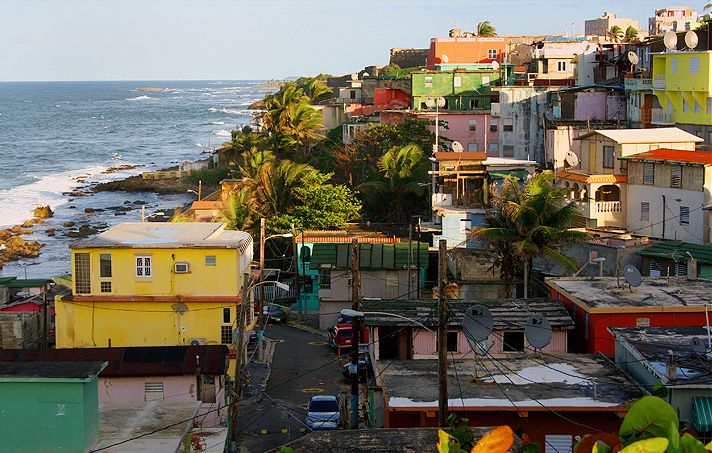 Thanks to the permanent sound engineer Sergey Kuklov for providing good quality sound! Thanks to all friends and participants for interesting communication and active participation in the life of the festival!
Thanks to the permanent sound engineer Sergey Kuklov for providing good quality sound! Thanks to all friends and participants for interesting communication and active participation in the life of the festival!
The next VIII Hot Sand Festival will take place on February 5-12, 2022. You can sign up now! The address of the festival on FB is the Hot Sand Festival.
Olga Krivhenko,
Viekes,
Puerto Rico-Washington, Columbia District
Warm sand, high palms and pine of Kolada in the hands
08.11.2011.2021
Author: Polina Rodina
If I were asked to close my eyes and imagine the Dominican Republic, I would definitely see a burning, swarthy beauty dancing barefoot on the sand with Pina Colada in her hands. White sandy beaches and blue oceans. Palm trees are long and slender. Tanned, sun-warmed shoulders, the taste of pineapple juice on the lips, and salt in wind-tangled locks. ..
..
This country, lost in the Caribbean somewhere between Cuba and Puerto Rico, will not leave you a chance not to fall in love, believe me!
There are currently no special entry requirements for the Dominican Republic. From Russia, you can buy a tour for every taste and budget, or organize a trip on your own. You do not need a vaccination certificate or PCR test to enter the country. It is only important to fill out the required health form on a special website and show it at the entrance and exit at the airport.
The time is 7 hours behind Moscow, and perhaps the most difficult thing will be only the jetlag upon return.
The season here lasts all year round, the air and water temperature stays around 28-30℃ all the time! The only thing is that there is conditionally a rainy season in the summer months (but the rains are usually short-lived and overnight), and in the autumn months there is an increased risk of strong winds and hurricanes that like to walk through the Caribbean. However, surprisingly, such cataclysms miraculously bypass the Dominican Republic, and really strong hurricanes happen here every few decades.
However, surprisingly, such cataclysms miraculously bypass the Dominican Republic, and really strong hurricanes happen here every few decades.
The most famous resorts are certainly Punta Cana on the side of the Atlantic, as well as small cozy towns on the Caribbean coast – Boca Chica and La Romana. Due to the rapidly growing popularity of this destination, resorts such as Puerto Plata and Samana in the north of the island have now become available to tourists.
First of all, you need to fly to the Dominican Republic for the most luxurious beaches. Kilometers of white sand await you in Punta Cana, and the azure waves of the Atlantic Ocean will lull you on a sun lounger with their soft noise.
Hotels usually have their own areas on the beaches with sunbeds and umbrellas. But keep in mind that the first 60 meters from the water’s edge is always public, so you can swim in any part of the beach at any hotel! But you can use the beach infrastructure only in your own.
Perhaps the only thing that can upset a little on the beach is algae. Sargasso – red “hello” from the Sargasso Sea. Unfortunately, no one can predict their appearance. But you can minimize the risks of meeting them: choose a good hotel located in a cozy lagoon, whose employees will quickly and efficiently remove these algae from the water and sand in the early morning! So, when you leisurely come to the beach after breakfast, you simply won’t notice anything. Also pay attention to the Caribbean coast, where algae usually rarely swim.
The locals also like to spend their weekends on the beach. Therefore, from Friday to Sunday, you can observe the so-called “staycation”. The hotel becomes noticeably more guests, and the beaches are filled with the noise and laughter of local kids.
Of course, you can lie on the white sand, drinking cold champagne, for ages! By the way, almost all Dominican hotels operate on an all-inclusive basis. Therefore, unlimited drinks are included in the price of your stay and are available around the clock.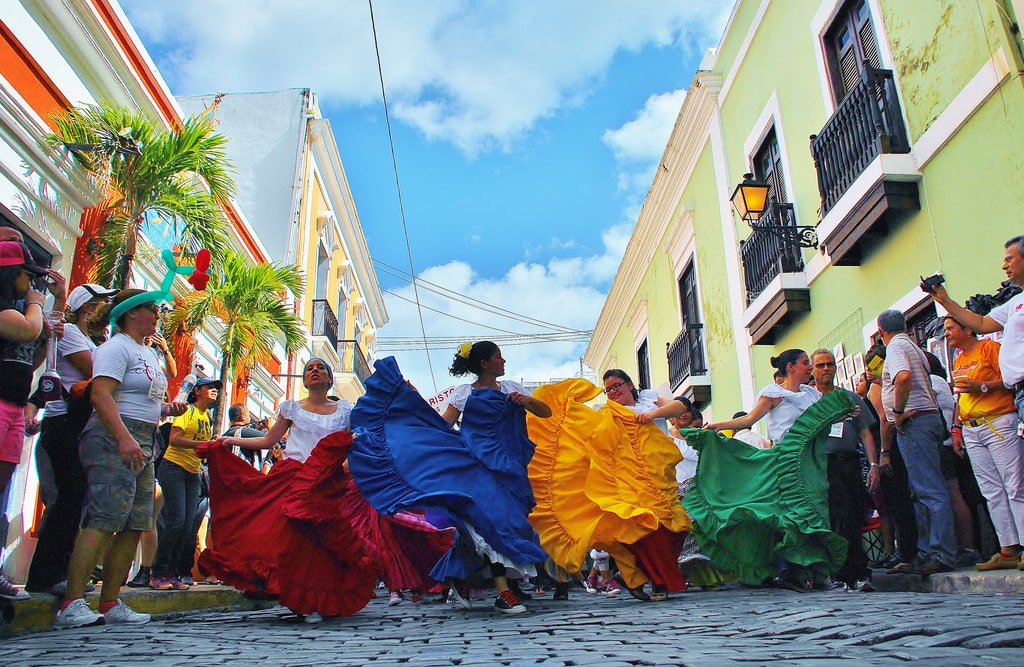 The higher the star rating of the hotel, the greater the choice and the higher the quality of drinks and food.
The higher the star rating of the hotel, the greater the choice and the higher the quality of drinks and food.
If you still want to diversify a relaxing beach holiday, then the Dominican Republic is ready to offer a huge variety of options here. Boat trips on a yacht through the bays and lagoons, snorkeling and diving, sea fishing, horseback riding along the coast, a buggy ride along wild unexplored beaches, a trip to the paradise island of Saona (the same one where Bounty was filmed), exotic waterfalls and jungles on peninsula Samana, meeting the dawn on Duarte Peak, an unforgettable flight on the heavenly swings of Mount Redonda!
And even for lovers of exceptionally useful and educational recreation, the Dominican Republic has an exclusive offer – an excursion to the capital. The city of Santo Domingo, which is over 500 years old, is the capital and founding place of the entire colonial New World. The streets of the colonial part of the city are included in the UNESCO heritage list.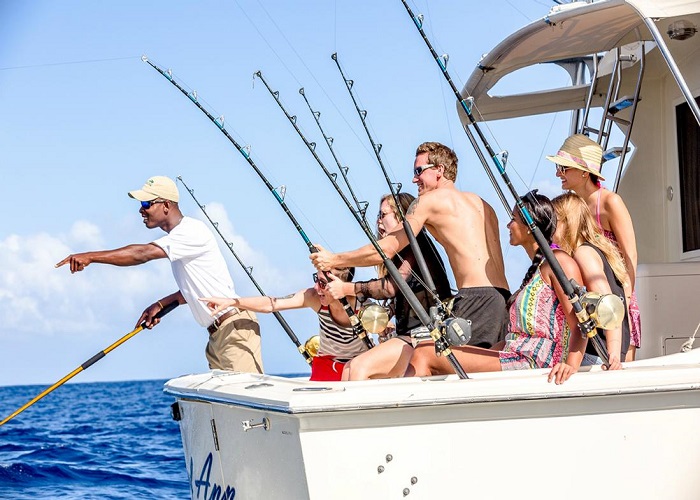 Walk along the ancient cobblestones of Dam Street, be sure to sit in the shade of huge ficuses on Columbus Square and look into the oldest Catholic cathedral in the New World – the Cathedral of Santa Maria la Menor. Santo Domingo has its own special unhurried atmosphere, here every stone breathes history.
Walk along the ancient cobblestones of Dam Street, be sure to sit in the shade of huge ficuses on Columbus Square and look into the oldest Catholic cathedral in the New World – the Cathedral of Santa Maria la Menor. Santo Domingo has its own special unhurried atmosphere, here every stone breathes history.
And if you want a completely new exciting experience and emotions, then you definitely need to fly a helicopter over the island. From a bird’s eye view, seeing the azure of the Atlantic and the green jungles of the island is unforgettable! By the way, the helicopter can also be used as a transport for excursions to the island of Saona or to the waterfalls. A great option if you don’t like crowds or long boat trips.
As a rule, five-star hotels in the Dominican Republic are huge and cover all the needs of guests, so there is simply no need to go beyond the territory. A lot of bars, à la carte restaurants of almost any cuisine in the world, swimming pools, SPA, water parks and casinos – all this you can easily find in any high-quality five.
I would like to stop separately at Lopesan Costa Bavaro . This chic designer hotel was built right on the eve of the pandemic at the end of 2019 and has been patiently waiting for its first guests. Lopesan Costa Bavaro is one of the few on the coast of Punta Cana with a new number of rooms and a modern interior. It has three areas of residence: a common area, adults only and an exclusive UNIQUE area for guests with special requirements for privacy and tranquility. The UNIQUE zone has a separate restaurant for breakfast and lunch, a separate beach where waiters will serve you and bring you soft drinks and cocktails. Also for guests are provided: a separate reception, SPA services and priority in booking à la carte restaurants.
Bars, restaurants, a huge luxurious infinity pool overlooking the ocean, a children’s water park, a walking area with boutiques and coffee houses, cozy tables and sofas for relaxing, a kids club, bowling, slot machines for teenagers and an unrealistic beauty of a wide snow-white beach – a great hotel option for a holiday in Punta Cana.